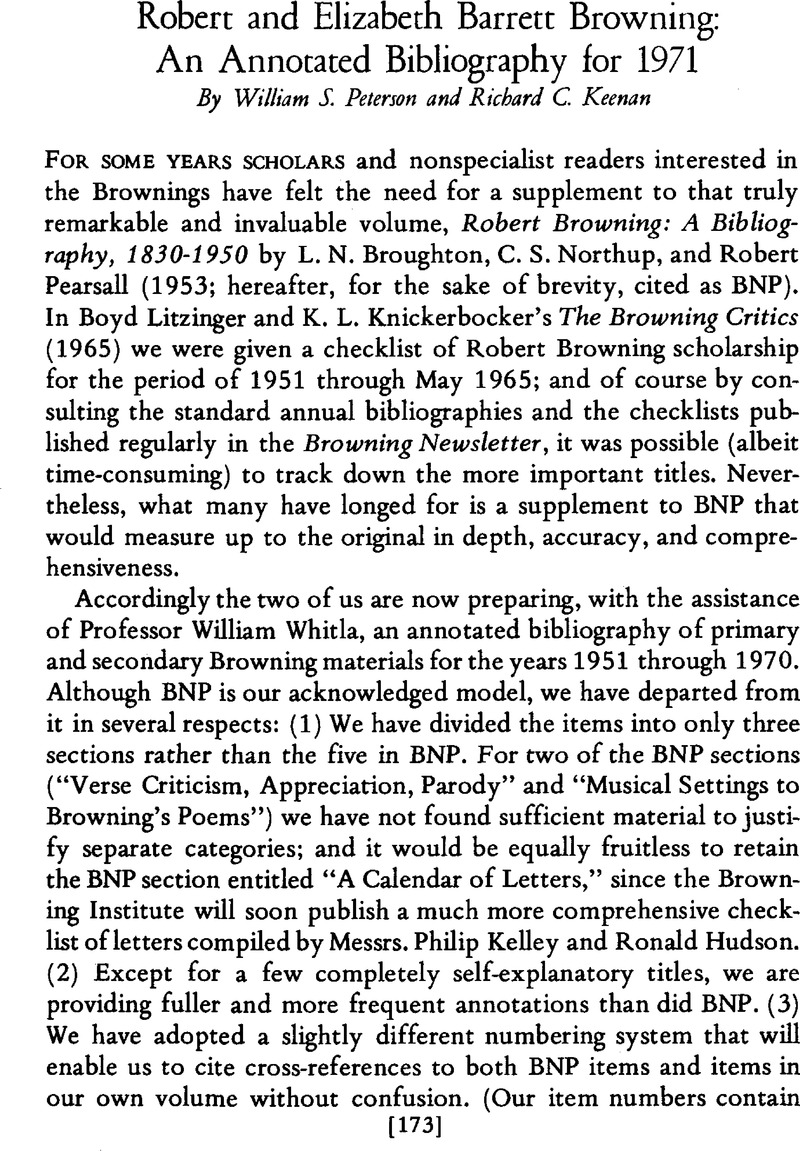A71:4]Collins, Thomas J., ed.
The Brownings to the Tennysons: Letters from Robert Browning and Elizabeth Barrett Browning to Alfred, Emily, and Hallam Tennyson 1852–1889. (Baylor Browning Interests, No. 22.)
Waco, Tex.:
Armstrong Browning Library,
1971. pp.
59. 38 letters, of which 24 are previously unpublished. Appendices: “Additional Family Letters” (three by Pen and Sarianna Browning); “Browning Books in Alfred Tennyson's Library” (with inscriptions noted); “The Sources of Browning's ‘Clive’” (reprinted from
Browning Newsletter, 1969). No index. Rev. by George O. Marshall, Jr.,
Browning Newsletter, No. 8 (Spring, 1972), pp. 64–67.
Google Scholar 